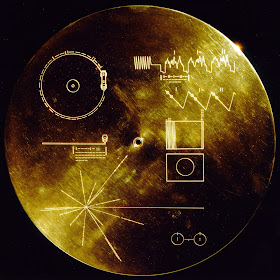That is not to say that I believe that any of the content is accurate any more than I believe that Jonathan Strange and Mr. Norrell is an accurate telling of how the Napoleonic Wars played out. The draw for me, at least, is still present, even if simply you consider it a fairly entrenched fiction. For what it's worth, they know how to craft a pretty entertaining story. Especially this guy.
This guy is Giorgio Tsoukalos, and yes he does have a name, and yes I did know his name off the top of my head. That's not the point. If you've ever seen him on a television then you've probably seen (knowingly or not) a bit of Ancient Aliens.
The premise of Ancient Aliens is pretty simple: Aliens screwed around with our history and/or prehistory. The story wrapped around it is a bit more complex - they've found a way to fill out 7 seasons worth of shows, after all.
We could talk about Ancient Aliens for hours, but in reality I'm really here with some pretty simple data. It has to do with one key phrase that I swear they say more or less constantly. That phrase is the start of a sentence:
"Is it possible... "
Now, the rest of the sentence may vary by episode. For instance, the question might be:
"Is it possible that otherworldly beings have been using basic mathematics and geometry in an effort to communicate with us?"
Or:
"Is it possible that German scientists had discovered a way to transport humans from one time and place to another, as some researchers believe?"
Or:
"Is it possible that some of the world's most mysterious caves really are home to extraterrestrial beings?"
It's a pretty brilliant setup, because it often plays off the black swan problem. Is it possible that otherworldly beings have ever tried to communicate with us using mathematics and geometry? Well, sure? It's very hard to say that no other civilization that may exist in the universe has never done exactly what we've already done a few times: try to communicate with others using mathematics and geometry.
I mean, mathematics and geometry is a lot more likely to work than just sending out a whole bunch of Rick Astley videos.
Put simply, this statement is exceptionally hard to falsify. This is exactly what makes it so useful.
Now, some are a little less believable than others. Did German scientists (they're talking about WWII and Nazi scientists, to be fair) build a time machine? All signs point to no. At the same time, if you pitched a script to me about a handful of German scientists who accidentally time traveled (let's say to a distant planet) and then were found by Kirk and the gang, well, I guess I'd suspend disbelief for a little while.
What I'm saying is that, if nothing else, it at least makes for some interesting speculative fiction.
Did I mention that I really like speculative fiction?
If you really want to dig in to some Ancient Aliens transcripts, I suggest you go to this site:
Just pick an episode, and let crtl+F do the rest.
In fact, that's exactly what I just did! By doing some simple searches of episode transcripts, I was able to piece together how many times the phrase "Is it possible..." is used in each episode. Honestly, I was expecting dozens. It's...not that high. I guess it's just the kind of phrase that sticks with you.
And, if we want to look at everything in the same graph:
Is it possible that this post is really really important? No. But if nothing else, it's a great example of how easy it can be to abuse the principles of falsification to tell a story.


















